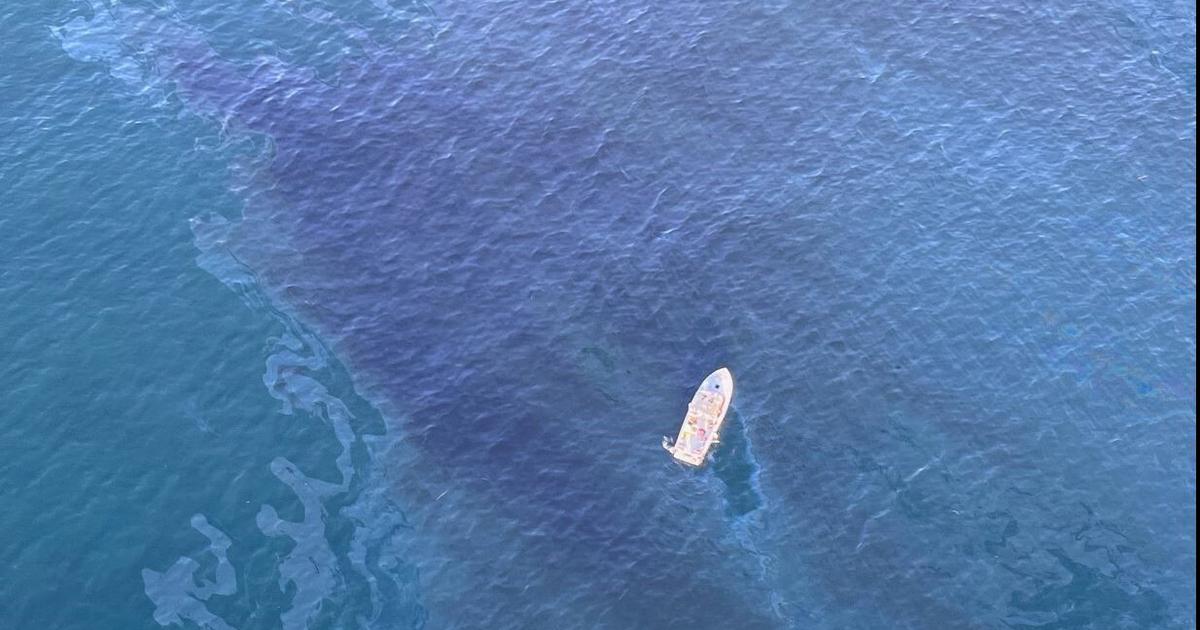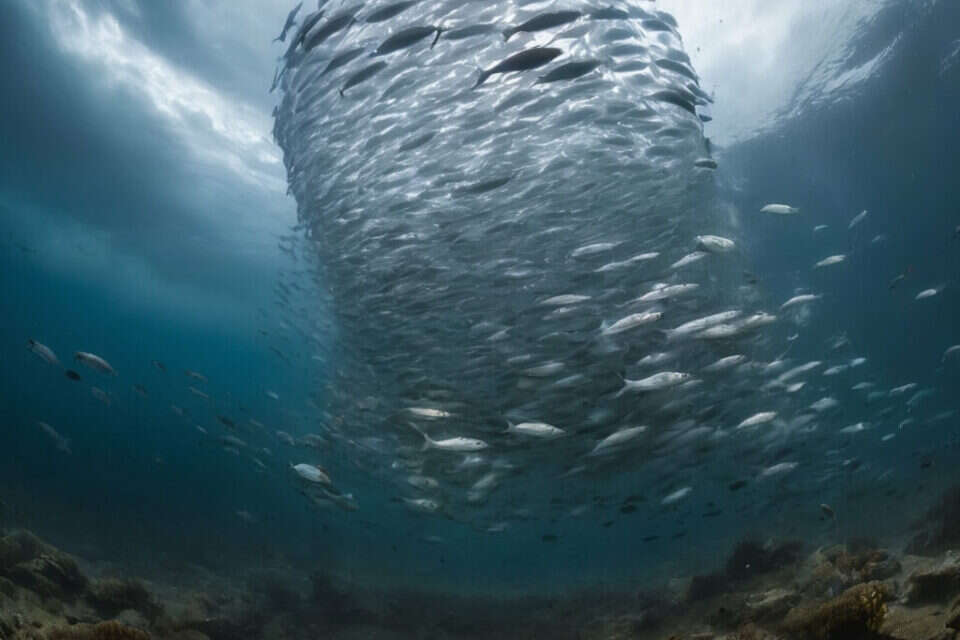EL PAÍS offers the América Futura section open for its daily and global informative contribution on sustainable development.
If you want to support our journalism, subscribe
here
.
Thousands and thousands of fish appeared on January 17, writhing in spasms on the surface of Yavaros Bay, in the municipality of Huatabampo, Sonora, in northern Mexico.
Videos released by fishermen in the area show how the dying animals give their last blows, while seagulls and pelicans pounce on them.
The scene was bad news for the locals: that morning they would not be able to go out to fish and earn their wages due to the possible health risk.
They couldn't do it the following days either.
“It was an impressive amount of fish!”, says the leader of the Loma Parda fishing cooperative, Martín Ramón Valenzuela Ruelas, better known in the area as Tolo, who spent a week with his other colleagues without being able to go out to sea.
According to the mayor of the municipality, Juan Jesús Flores Mendoza, "nearly three tons of fish" were lost.
The most affected species was the chigüil, a type of fish that, despite the fact that indications have been found that it contains polluting substances, they continue to consume in the area.
However, this fish, also called catfish, "is consumed in the area because it is one of the cheapest," says Tolo.
After a week of uncertainty and speculation, on Tuesday the authorities ruled out that the death of the fish was due to the presence of toxins in the waters, as suggested by scientists who have worked in the area.
"I can assure you that it was not a contamination problem," says Steve Michel Millan, a federal inspector for the Federal Attorney for Environmental Protection (Profepa).
According to the official, after the incident, the Sonora State Aquaculture Health Committee (Cosaes) sent a technician to collect samples.
That agency published a report, to which América Futura had access, which rules out the presence of toxic substances in the water.
"Laboratory studies have already been carried out and there are no dangers," says the mayor of the municipality.
Based on that document, the authorities lifted the ban on fishing.
In addition, they once again allowed the sale of marine products, which, after the incident, had been temporarily suspended.
Statement from the Government of Sonora in which it asks merchants who sell seafood for human consumption to refrain from selling fishing products. Courtesy
But experts who have carried out previous studies in the area and consulted scientists consider that the report has fundamental technical deficiencies that prevent reaching that conclusion and determining the exact cause of the incident.
“It is stated that foreign agents were not detected in the gills (of the fish), but they concluded it only by observation.
For a correct pathological analysis, a standard procedure would be required that has not been carried out”, says Omar Orellano, research professor in the Department of Ecology and Natural Resources of the Faculty of Sciences of the National Autonomous University of Mexico (UNAM).
“There is no sample size, nor the state of putrefaction of the specimens, nor a description of the chain of custody.
Nor does it include basic technical aspects of toxicological studies”, reiterates the expert in ecological risk,
"They only checked with a microscope," warns Jaqueline García, an expert in water quality and pesticides at the Food and Development Research Center (CIAD).
Since the episode of the massive death of fish was learned, the authorities and some fishermen suggested that it could be due to the low temperatures that the area has suffered in recent days.
García does not rule out this hypothesis, because the chigüil is a fish that is sensitive to changes in temperature, but he also believes that they could have been victims of the red tide, the outcrop of toxic microalgae, although the phenomenon usually begins between February and March, as he explains. .
“Red tides have become an increasingly common phenomenon, and they are directly related to temperature and excess organic matter in the water.
And we already know the amount of urban waste and that of the sardine companies that is dumped directly into the sea in this area,” says Elsa María Coria, veterinarian and director of the Center for the Rescue, Rehabilitation and Research of Wildlife (Crrifs).
The Yavaros pier has been suffering for years from the effects of high industrial activity and the clandestine discharge of wastewater from sardine and food companies.
For this reason, some neighbors find it hard to believe that the episode has nothing to do with that.
“They use all kinds of chemicals, without regulation or care.
Surely the high mortality was due to a discharge of fat ”, says a fisherman who does not want to give his name.
Many Yavaros workers prefer to remain silent for fear of losing their jobs.
“Almost the entire town lives from sardines and production is currently at maximum activity.
It is not uncommon for leaks to occur,” adds García, from CIAD.
The problem with this type of discharge from industrial processes in the water is that they saturate the aquatic environment, making it anoxic.
“Carbon dioxide and other gases are released, oxygen drops and the fish drown,” explains García.
She has also witnessed this type of procedure on several occasions in an ecosystem that does not have drainage and water treatment systems.
“The last time I visited the area, I found lots of floating tomatoes, leftovers from the sauces they make for sale.
Around here everything is thrown into the water, a lot of organic waste ”, she details.
In the Bay of Guaymas, which has the most important fishing port on the eastern coast of the Gulf of California, about 200 kilometers north of Yavaros, "we have also seen how they clean up and release chemical products directly into the sea," says Coria, the director of Crrifs, referring to industries such as the shrimp farm, whose farms can be seen along the entire coastline of Yavaros, and which systematically use caustic soda, sodium hydroxide, for cleaning.
The expert, who is the author of numerous studies on the impact of industrial activity on the water in that State, believes that with the information released so far by the authorities, no reason for the death of the tons can be determined or ruled out. Of fishes.
A bird paradise wetland system
The Bay of Yavaros, on which the local businesses of the pier and the processing plants of the large companies overlook, is part of the Yavaros-Moroncarit lagoon complex, a unique ecosystem that acts as a winter refuge on the Pacific migratory route of Americas for more than 85,000 specimens of up to 19 different birds that visit its marshes, muddy shallows, and mangrove swamps every year.
According to the Hemispheric Network of Shorebird Reserves, the main threats facing the area are overfishing and direct discharges into port waters.
From Lobos Bay to Yavaros Bay, there are also dozens of agricultural drains.
"It is an area that is highly contaminated by urban and industrial discharges, by the use of pesticides that end up in bodies of water," explains the CIAD researcher.
Hundreds of dead fish in Yavaros.COURTESY
The environmental deterioration derived from the productive activity of Sonora in the ecosystems is a documented history.
During the 1960s, this region was one of the most exploited by the so-called 'Green Revolution', the radical increase in agricultural production with the use of chemicals.
“It was heavily contaminated with DDT [an insecticide] used for monocultures such as wheat or cotton.
This substance can still be found today in DDE, its degraded form," explains García, author of a study that found residues of the organochlorine drug in the shells and content of heron eggs in the Tabari lagoon, some 100 kilometers north of the municipality. from Huatabampo.
In 1972, Mexico banned the use of resistant pesticides, better known as DDT, “and they were replaced by organophosphates, which no longer bioaccumulate.
But in large quantities they are still toxic, like those that arrive from Navojoa to the water bodies of Yavaroa," says the CIAD expert.
Just 50 kilometers from the lagoon, this city forms one of the richest agricultural valleys in all of Mexico.
"Chlorinated organic compounds are dragged from the fields and pig farms to the lagoons, bringing many metals, such as lead," explains García.
Mining has also had a strong impact on the State, a sector that has been responsible for various environmental disasters in the region.
The last one happened in 2019, when Grupo México, one of the most powerful companies in the country, spilled 3,000 liters of sulfuric acid in the Bay of Guaymas, where the organization chaired by Coria works.
"That accident was tremendous, we had to review the affected fauna in the waters of the Gulf of California."
Also known as the Sea of Cortez, and declared the world's aquarium for its impressive biodiversity, this geographical feature of the Pacific Ocean opens directly into Yavaros Bay.
Its sea is home to 900 species of fish, including up to 40 types of sharks, and some of the most spectacular marine mammals on the planet, such as the humpback, gray and blue whales.
“Years ago, cetaceans could be seen from time to time in the lagoon.
But, after all the exploitation that has been done in the area, they are no longer seen," says García.
“And the same thing happens in Guaymas Bay.
Before, the whales got inside.
They no longer have enough food.
The fishermen with whom we work tell us so.
It is increasingly difficult for them to cover operating expenses and their profits are minimal”, reports the director of the NGO.
Episodes like the one that occurred a week ago, which according to the fishermen have been repeated in recent years, only make the situation worse.
"Thank God we can go fishing now!" Tolo exclaims happily, after hearing the mayor's notice.
"If the authorities already give permission, you have to work, there is a lot of need," he confesses.
In Coria's opinion, the episode of the dead fish in the port of Yavaros should help the government to look for other, more sustainable sources of employment that do not imply using up resources.
"It's not enough anymore!" denounces the veterinarian, waiting for further investigation into the incident that brought so much commotion to the town.




/cloudfront-eu-central-1.images.arcpublishing.com/prisa/PFCASL26NJGBTAP7F55QP67V3I.jpg)




